Who Are Haji Firuz and Amoo Norouz?
In Iran, Norouz, the Persian New Year, holds a special place in people's hearts. It's a time of great anticipation, as the arrival of spring and the promise of fresh beginnings fill the air.
The excitement leading up to Norouz is palpable. As Norouz approaches, streets in Iran come alive with the vibrant presence of Haji Firuz and Amoo Norouz.
Hajji Firuz, in his striking red attire and distinctive charcoal-painted face, adds a touch of exuberance to the pre-Norouz atmosphere and Amoo Norouz, the elderly guardian of the New Year, symbolizes renewal and hope.
In this article, we'll explore the history, cultural significance, and unique traditions associated with these two beloved figures: Haji Firooz and Amoo Norouz.
Who is Haji Firuz?
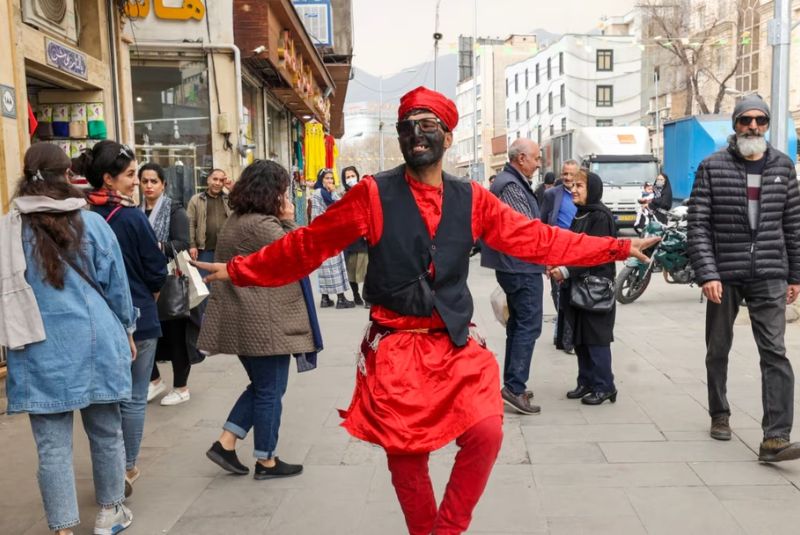
Haji Firooz is a traditional character in Iranian culture who is associated with the celebration of Nowruz, the Persian New Year. He is often depicted as a jolly and mischievous figure who spreads joy and happiness during the Nowruz festivities. Haji Firooz's appearance and costume are quite distinctive and have evolved over time, but there are some common elements that are typically associated with him:
- Blackface: Traditionally, Haji Firuz's face is painted black, which is a controversial aspect of the character. Some people view this practice as offensive, while others argue that it is a harmless part of the Nowruz tradition. In recent years, there has been a growing debate about whether this practice should continue.
- Red Costume: Haji Firooz typically wears a bright red costume, which includes a loose-fitting tunic or robe and matching pants. The red color symbolizes the joy and celebration of Nowruz.
- Large Hat: He often wears a large, conical hat that may be decorated with colorful ribbons or other festive embellishments. The hat is an important part of his costume and adds to his distinctive appearance.
- Jingle Bells: Haji Firooz is known for carrying a tambourine or a set of jingle bells. He plays this instrument and dances while singing traditional songs to entertain people during Nowruz celebrations.
- Accessories: In addition to the tambourine or jingle bells, Hajji Firuz may wear other accessories such as a long, fake mustache and sometimes carries a cane or staff.
- Makeup: Besides the blackface, Haji Firooz may also have white or colorful markings on his cheeks to accentuate his cheerful and festive appearance.
When is Haji Firuz Seen?
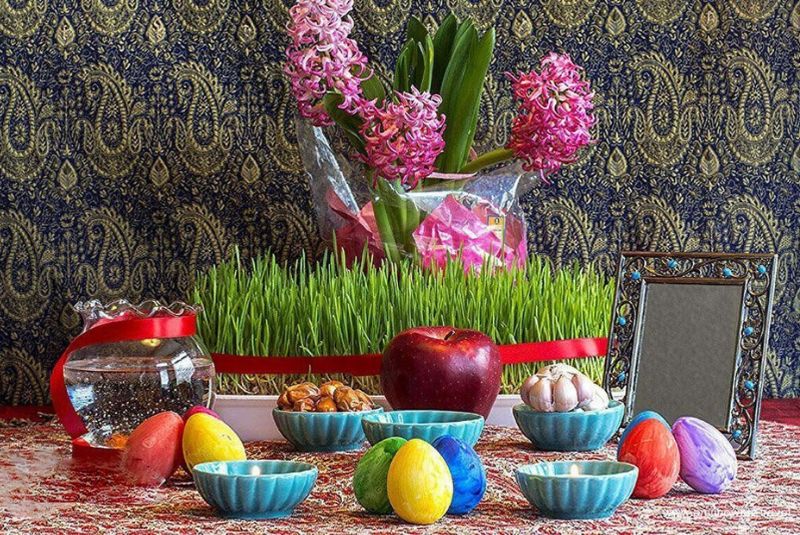
Haji Firooz is primarily seen in the days leading up to the Persian New Year, Nowruz. His appearances become more frequent and festive in the run-up to Nowruz, which typically begins a few days before the actual New Year's Day. During this period, he roams the streets, markets, and various public places to entertain people and spread joy. His lively presence and performances are meant to enhance the celebratory atmosphere and build excitement for the approaching New Year. Hajji Firuz's appearances become less frequent after Nowruz, as the holiday season progresses.
| Read more: Iranian Festivals and Celebrations
What Haji Firuz Represents?
Haji Firooz is often seen as a symbol of the rebirth and renewal that come with the arrival of spring and the New Year. His presence marks the end of the old year and the beginning of a fresh start. His singing, dancing, and playful antics create a festive atmosphere, and he is believed to ward off any negativity.
Haji Firooz personifies the spirit of Nowruz, which is a time of hope, optimism, and new beginnings. His red costume and lively demeanor represent the energy and enthusiasm associated with the holiday.
Mythical Stories Surrounding Haji Firuz
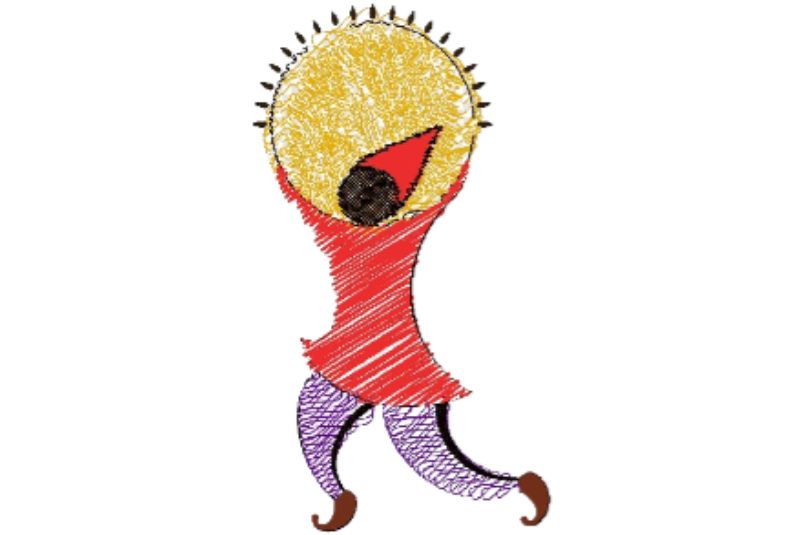
Although the otigin of Haji firouz figure is yet unknown, there are some speculations and theories about his possible connections to older folklore and mythology:
Tammuz (Ishtar) and King Domozi Myth
- In ancient Mesopotamian mythology, Ishtar, also known as Tammuz, considers King Domozi for marriage, and her travels to the underworld have an impact on the earth's fertility.
- To restore fertility and life to the earth, the gods send King Domozi underground, and his return marks the beginning of the spring season.
- King Domozi emerges from the underground with a drum and a ring of bells, and his face is described as being completely black.
Haji Firouz as the Messenger of Spring
- In Iranian customs, Haji Firouz is a character whose black face symbolizes the end of darkness and impurity, marking the arrival of spring.
- Haji Firouz is considered the messenger of spring and is associated with Nowruz, the Persian New Year, celebrating the renewal of life and the changing of seasons.
Haji Firouz as a Symbol of Joy and Freedom
- Haji Firouz was a symbol of a free man who celebrated the last days of the year with joy and humor.
- He would often share jokes that brought laughter and happiness to others, making him a symbol of joy and celebration before Eid.
Haji Firouz and Siah Bazi
- Haji Firouz's popularity is linked to the growth of traditional Iranian performances called "Siah Bazi" in Tehran during the 1920s and 1930s.
- These performances contributed to the character's emergence as an integral part of Nowruz celebrations.
Zoroastrian Mobad and the Holy Fire
Another theory suggests that Haji Firouz was originally a Zoroastrian Mobad, a priest, and that his blackened face may have resulted from his proximity to the holy fire in Zoroastrian rituals.
Incarnation of Siavash's Soul
- Some descriptions of Haji Firouz connect him to the character of Siavash from Ferdowsi's Shahnameh, suggesting that he embodies Siavash's soul from the world of the dead.
- Siavash is a prominent figure in Persian epic literature and is associated with themes of purity and rebirth.
Haji Firooz and the Rescue of Anahita
- In one Haji Firooz tale, he is depicted as the deity of plants and embarks on a subterranean journey to rescue his wife, Anahita, who is the goddess of water, from the malevolent figure Ahriman.
- To find his wife and return with her to deliver rain and preserve the plants, Haji Firuz must pass through fire and ashes in the underworld.
- As he emerges from the underworld, his face is described as black from the smoke and fire, but he takes pride in having saved the planet and, more importantly, his wife.
Haji Firuz as a Former Slave
- Another tale describes Haji Firuz as a black-skinned slave who was owned by a wealthy family.
- Despite his difficult and oppressive circumstances as a slave, Haji Firuz was known for his wit, humor, and kind spirit.
- After the family decided to release Hajji Firuz from his bondage as a reward for his loyal service, he began to wander the streets, entertaining people with his singing and dancing during the festive season of Nowruz.
| Related: Sizdah Bedar Festival - 13th Farvardin in Iran
Is Haji Firuz a Racist Concept?

Haji Firooz may be considered racist by some due to the traditional use of blackface, which can be associated with racial insensitivity, minstrelsy, or negative stereotypes. Blackface has historical connections to these issues, and it can be offensive. However, it's important to acknowledge that Haji Firooz is deeply rooted in Iranian culture and tradition, and most of the stories and historical explanations behind its origins point to reasons other than representing black skin or slavery concepts.
| Also read about: Tirgan Festival - Water Festival in Iran from Ancient Times
Why is Haji Firuz's Face Painted Black?
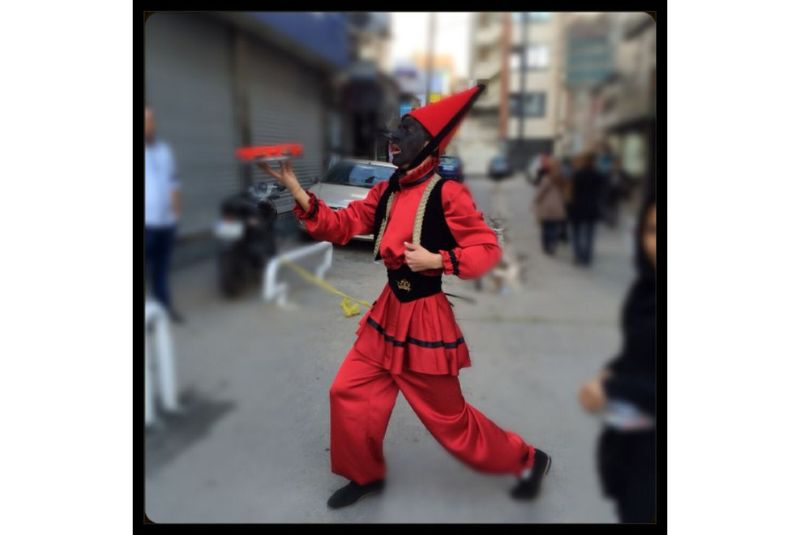
The black face paint worn by Haji Firooz is believed to have multiple interpretations, with some suggesting it may be due to the soot and ashes produced by Chaharshanbe Suri fires, marking the end of the year before Nowruz, while others propose that it symbolizes a hidden or unimportant identity, emphasizing that what truly matters is the joy and happiness he brings to the New Year celebrations, rather than the individual behind the character.
Who is Amoo Norouz?
Amoo Norouz (also spelled Amu Nowruz or Amoo Nowrooz) is another character associated with Nowruz. Amoo Norouz is often referred to as "Uncle Nowruz" or "Uncle New Year" and is a cheerful and beloved figure in Iranian culture. While Haji Firooz is typically associated with merriment and entertainment during Nowruz, Amoo Norouz plays a more symbolic and traditional role.
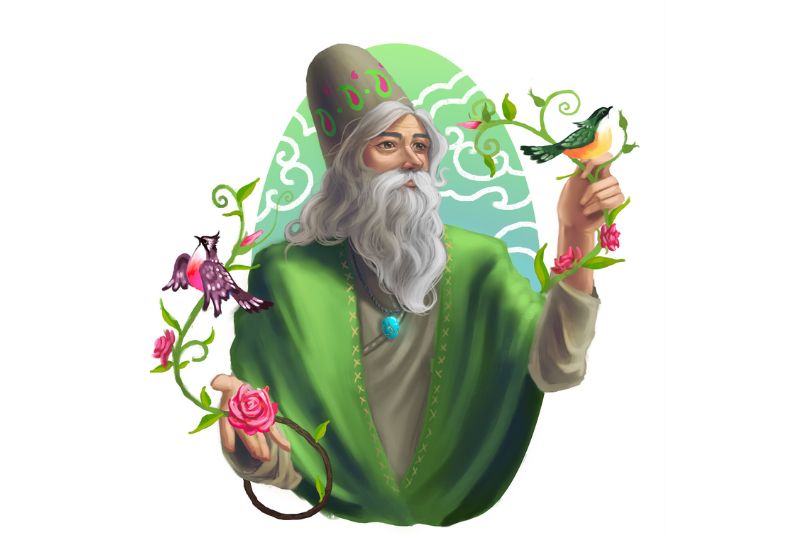
Amoo Norouz is depicted as an elderly man with a long white beard, similar to Santa Claus in Western culture. He is often portrayed as carrying a walking stick, and he wears a red robe and a traditional Persian hat. Amoo Norouz is seen as the one who ushers in the New Year and the arrival of spring, and his role is to bring good fortune and blessings to people's homes and lives.
During Nowruz, it is common for children to receive gifts and money from Amoo Norouz, and he is believed to grant wishes and blessings for the year ahead. Families set a special table called "Haft-Seen," which is beautifully decorated with symbolic items, and Amoo Norouz is traditionally placed at this table to bless the celebration.
Amoo Norouz embodies the spirit of renewal and hope associated with Nowruz, and his presence adds to the festive atmosphere of the holiday. While he may not have the same level of playful and mischievous antics as Haji Firuz, Amoo Norouz is a significant and respected figure in the Persian New Year tradition.
| Read more: Yalda Night - An Ancient Persian Celebration
Haji Firooz and Amoo Norouz vs. Santa Claus
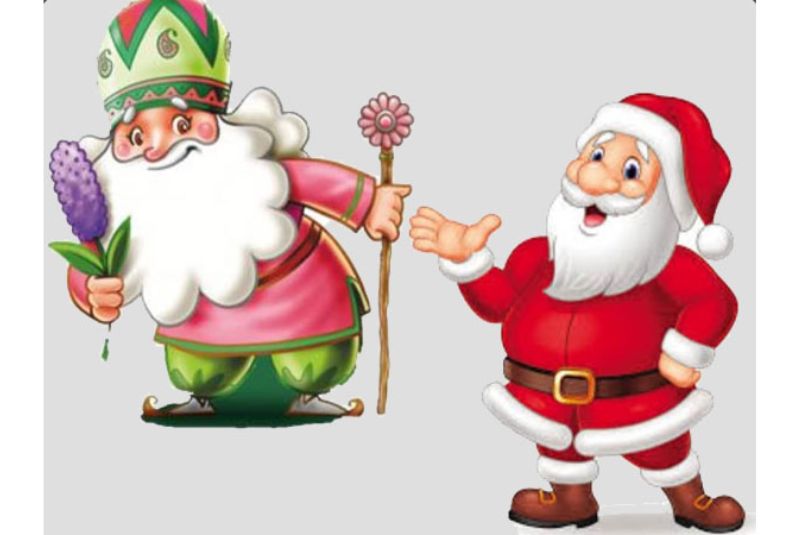
While all three figures bring joy and celebration, their origins, roles, and symbolism are specific to their respective cultural traditions, with Haji Firooz and Amoo Norouz representing Nowruz in Iran, the arrival of spring and blessings for the New Year, and Santa Claus representing Christmas and the Western New Year in Western countries.
| Discover: Sepandarmazgan - A Celebration of Love, Women and Earth
Haji Firuz and Amoo Norouz in Other Cultures
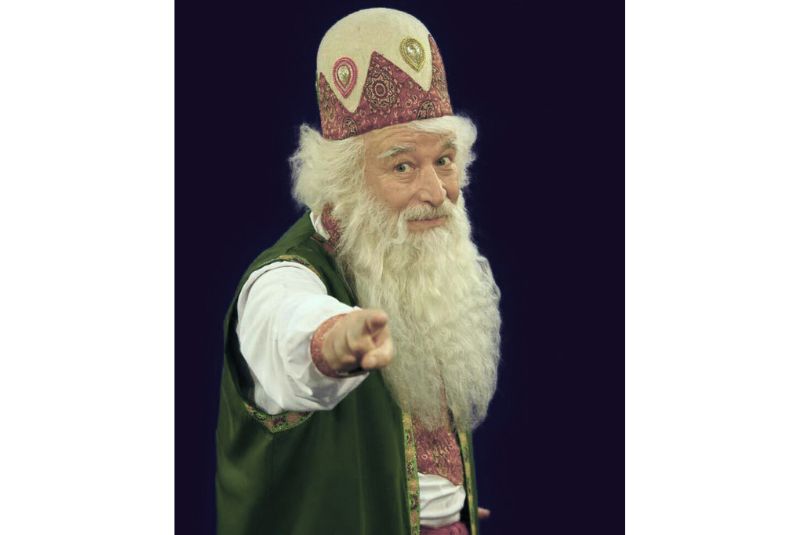
Various cultures around the world have their own festive characters or figures similar to Haji Firooz and Amoo Norouz in the sense that they bring joy, celebrate important occasions, or represent specific cultural events. Here are a few examples:
- Père Noël (France): Père Noël, or Father Christmas, is the French counterpart to Santa Claus and plays a role in the Christmas celebrations in France. He brings gifts to children during the holiday season.
- La Befana (Italy): La Befana is a kind and elderly witch-like figure in Italian folklore. She delivers gifts to children on the night of January 5th, the eve of the Epiphany, which marks the end of the Christmas season.
- Krampus (Central Europe): Krampus is a horned, demonic character from Central European folklore who accompanies Saint Nicholas. While Saint Nicholas rewards well-behaved children, Krampus is said to punish naughty children.
- Zwarte Piet (Netherlands and Belgium): Zwarte Piet, or Black Pete, is a companion of Sinterklaas (Saint Nicholas) in Dutch and Belgian traditions. He is often portrayed as a black-faced character who assists Sinterklaas during the holiday season.
- Diablitos (Costa Rica): In Costa Rican folk traditions, the Diablitos, or little devils, participate in traditional dances and celebrations. They often wear elaborate masks and costumes during festivals and celebrations.
- Caga Tió (Catalonia, Spain): Caga Tió, also known as the "pooping log," is a unique figure in Catalan Christmas traditions. It's a hollow log with a face and legs, which is "beaten" by children to "excrete" small gifts and sweets.
- Mari Lwyd (Wales): The Mari Lwyd is a Welsh tradition involving a horse's skull mounted on a pole and adorned with a white sheet. It is carried by a group who goes door to door, engaging in a musical battle with the householders.
- Panday (Trinidad and Tobago): In Trinidad and Tobago, Panday is a character often seen during Carnival celebrations. Panday is a playful and mischievous figure who engages in humorous antics and pranks during the festivities.
| Suggestion: Mehregan Festival in Iran - Celebrate Autumn with Zoroastrians
Final Takeaway
Haji Firuz and Amoo Norouz spread happiness and create a friendly atmosphere as they herald the New Year. Their mission is to help people temporarily set aside their worries and enjoy the celebrations.
Nowruz in Iran provides an ideal chance for travelers to experience the vibrant festival and its welcoming ambiance, making it the perfect time to visit and celebrate the New Year.
Share your story!
Comment below and let us know about your Experience.
Your story inspires others!


0 Comment
Leave a Comment